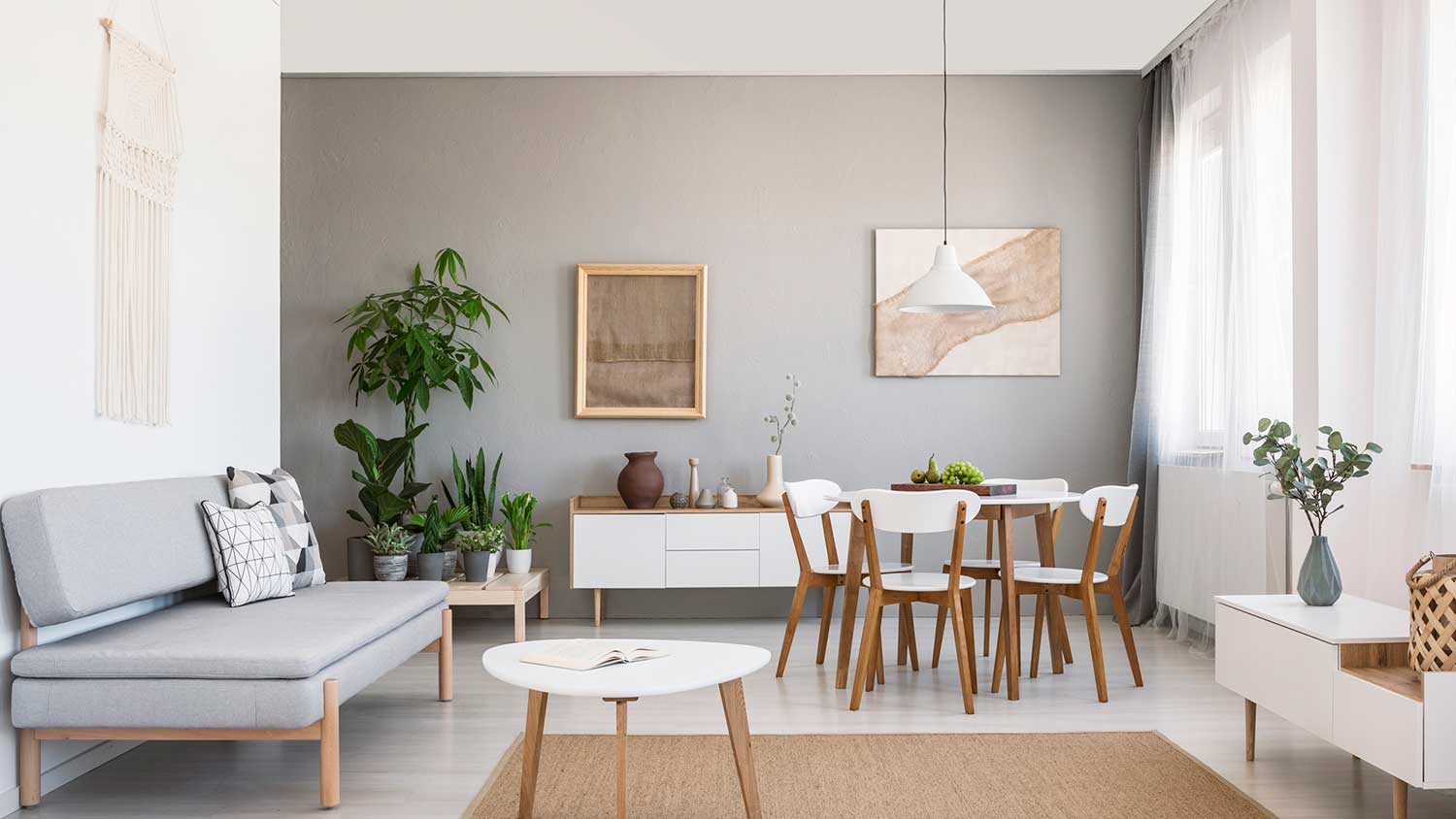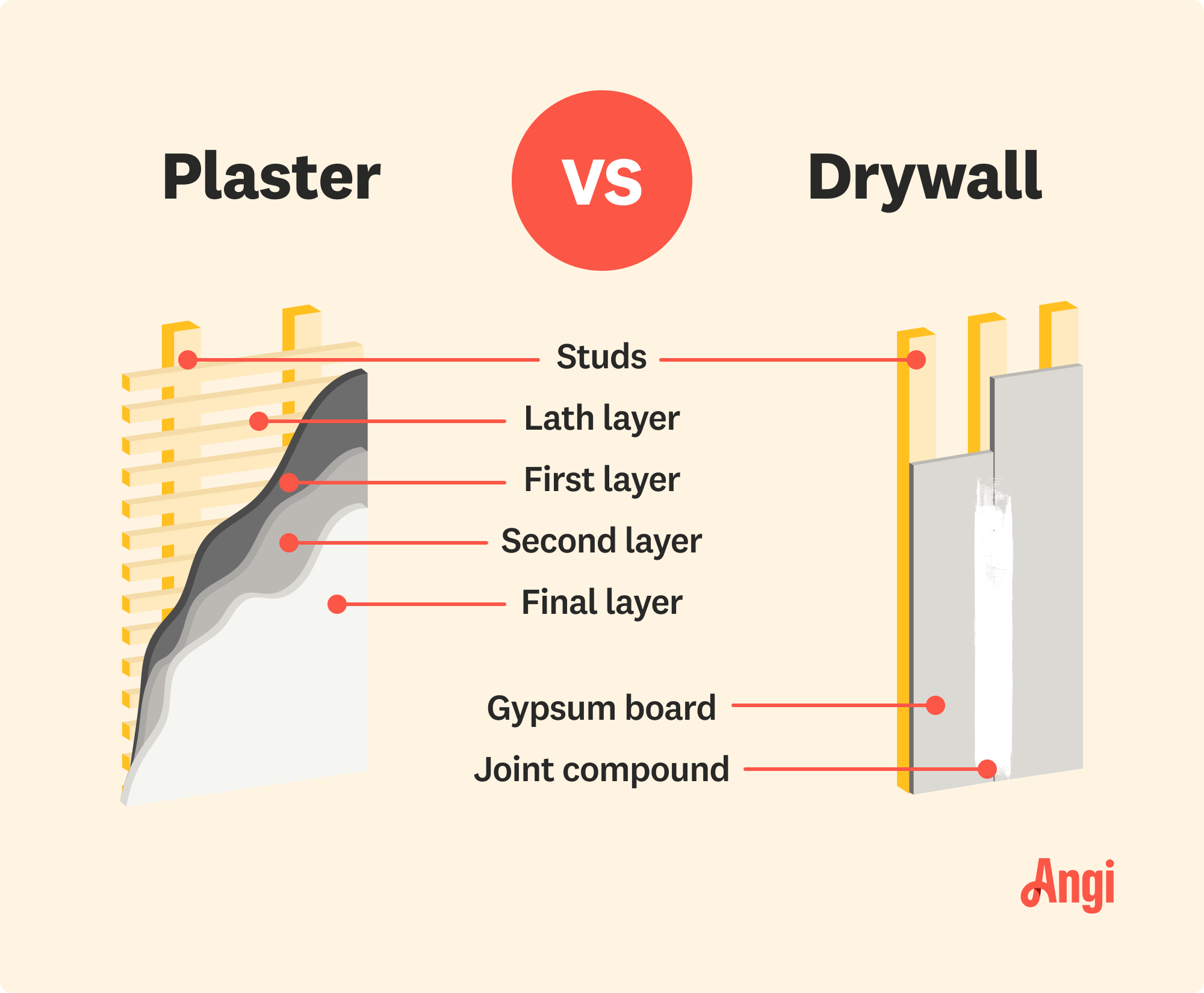What Is Plaster? What You Need to Know About This Classic Building Material
It’s not the most common material for walls anymore, but it was one of the first


Plaster is a type of building material composed primarily of gypsum, but some types include lime and cement.
Four common types of plaster include gypsum, Plaster of Paris, lime, and cement plaster.
Plaster fell out of fashion after the introduction of drywall.
It is still sometimes used in renovations and restorations.
Plaster is a paste composed of minerals and water that can be used in construction. In fact, plaster has been used for this purpose for several thousand years. This versatile material has been used for everything from rough external rendering to crafting fine art stucco decorations lining the interiors of European churches. Although it’s not the most common choice anymore, it’s still in use today. Read on to learn more about what plaster is and how it’s used.
The Basics of Plaster

Plaster is a paste most commonly composed of a mineral, like lime or gypsum, as well as water and sand. Because of its pasty texture when wet, it can be molded into place to finish ceilings and walls before it dries and hardens.
Although plaster largely fell out of fashion in the 1950s when drywall was introduced to the world, it’s still used today. It’s particularly common in the renovation or restoration of historic buildings. Additionally, because of its moldable quality, plaster is still a relatively common choice when it comes to crafting ornamental interior shapes, and it can be helpful in curved areas where it’s difficult to utilize drywall.
Interesting fact: Some of the earliest forms of plaster included animal hair as a binding agent, which you may be able to notice if you look at certain historic plaster walls.
Types of Plaster
There are a few different types of plaster, each of which is best suited for slightly different purposes.
Gypsum plaster is the most common, contemporary type of plaster, and it’s made of the natural mineral gypsum mixed with water. Gypsum plaster is durable but doesn’t stand up well to humidity, so it’s best for interior walls in areas other than bathrooms and kitchens.
Plaster of Paris is a subset of gypsum plaster in which the gypsum in the mix has been partially dehydrated. This gives Plaster of Paris a quicker setting time than other types and makes it good for interior decorations and molds.
Lime plaster is the oldest type (and luckily, any modern lime plaster you find on the shelf won’t contain animal hair). The lime in the mix makes it more flexible and breathable, which means it’s better suited for areas with moisture.
Cement plaster, as its name suggests, is composed of cement—as well as water and sand. This type of plaster can be used both internally and externally, but it can have a rough appearance to its finish and can set quickly, making it somewhat more challenging to work with.
Plaster vs. Drywall

Drywall is the more popular construction material between the two in large part because the cost of plaster is higher than that of drywall. Plaster is also more effort-intensive to install. Drywall creates thinner walls than plaster, which means it can be less useful for sound dampening, but it can also be more energy efficient and less prone to cracking.
Like some types of plaster, drywall is composed of gypsum, but it comes pre-dried (unlike plaster) between thick layers of facer and backer paper. Drywall may also contain additives like paper or glass fiber, plasticizers, foaming agents, and other substances that can help reduce its flammability and mildew risk.
| Plaster | Drywall |
|---|---|
| Great sound barrier | Less messy during installation |
| Very long-lasting | Easier to remove |
| More energy efficient | Easier to hang items on walls |
DIY vs. Hiring a Pro for Plaster Work
If you’re taking on a major home construction project involving plaster—including potentially building new walls or refinishing old ones—consider reaching out to a local plaster repair pro.
Plaster is incredibly messy, and it isn’t a very friendly material for DIYers. A pro will be able to get the job done right the first time with minimal mess and a beautiful result.
Frequently Asked Questions
While there is such a thing as cement plaster, not all plaster is cement, and not all cement is plaster. Normal cement is made of ground limestone and clay, which means it’s harder than plaster when it dries. While most common plasters are made of gypsum, cement plaster is made of cement, sand, and water, and it can be used to finish durable exterior walls.
Plaster is still used in contemporary construction, though not as often as it once was. That’s in large part because the introduction of drywall made construction of walls both easier and more budget-friendly, which is a hard combination to beat. However, plaster is still used in renovations and restorations of historic buildings, as well as in creating ornamental interior features.
While it’s not toxic to simply be in a room with plaster fixtures, plaster dust—produced when plaster walls are sanded, for example—can pose health hazards. Made up of tiny particles of hard minerals, including gypsum, limestone, and clay, plaster dust can be irritating to the respiratory system, so it’s important to always utilize the proper protective equipment when undergoing plaster construction projects.















